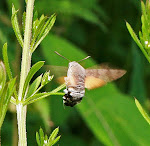In 1944, during the Second World War when the German army occupied Greece, one of its personnel, the botanist Werner Rothmaler, explored the extreme southern tip of the Mani peninsula searching for plants. This southern tip is known as Cape Taenari and is the central of the three south-pointing peninsulas which gives the map of southern Greece its characteristic outline.
In a remote ravine near the deserted village of Korogonianika, Rothmaler discovered a white-flowered member of the daisy family (Asteraceae) growing in the crevices of a steep limestone cliff and which he identified as being a new species of Helichrysum (a type of Everlasting Flower). This was a chasmophyte, a plant restricted to a cliff-face habitat, and he named it Helichrysum taenari after the area. The type specimen which Rothmaler collected was lost when the Berlin herbarium was bomb-damaged shortly afterwards and he probably wrote his original description of the plant from memory. It was subsequently thought to be extinct until re-found by Arne Strid’s party in 1984 at what appeared to be Rothmaler's original locality. Unfortunately, shortly afterwards in the 1990s, the ravine was engulfed by fire and it was feared that the plant was lost.
.jpg)
In 2002 we paid a visit to the area to try re-find the Helichrysum. The vegetation in the ravine had quickly recovered and was now a dense mass of spiny shrubs which reached head height and above. This dense growth in the ravine bed was penetrated with great difficulty (and painfully) but eventually a small clump of what appeared to be Rothmaler’s white-flowered plant was spotted through binoculars, high on the cliff-face.
.jpg)
A closer approach was out of the question but following a hazardous extrication from the ravine, access seemed feasible from above and this was eventually achieved by a long circuitous route.
.jpg)
From the top of the cliff, several flowering plants could be seen at various points on the face below and after a careful descent some were photographed. Later, a single seedling was found growing in a crevice of a disused vine terrace nearby.
.jpg)
It was very encouraging to establish that despite the fire this extremely rare plant still survived at its original locality. Although a second site for it had been found by a separate group of botanists at Vathia, another deserted village nearby, these were the only two known localities. In the 17th and 18th centuries the whole Mani peninsula was a lawless no-go area. Today it is peaceful but largely uninhabited so that the plant should have every chance of survival.
.jpg)
The distinctive square-towered houses of the southern Mani at the deserted village of Vathia. This is within the limited area where Helichrysum taenari occurs.
.jpg)






I run 2 homepages which combine a botanical key with pictures. My aim is to describe the Flora of Germany (www.flora-de.de) and the Flora of the Alps and the Mediterranean from Greece to Portugal (www.mittelmeerflora.de).
ReplyDeleteI like to use your pictures from Helichrysum taenari. If you give me your ok I would link the pictures with your name and your website.
Best wishes
Thomas Meyer